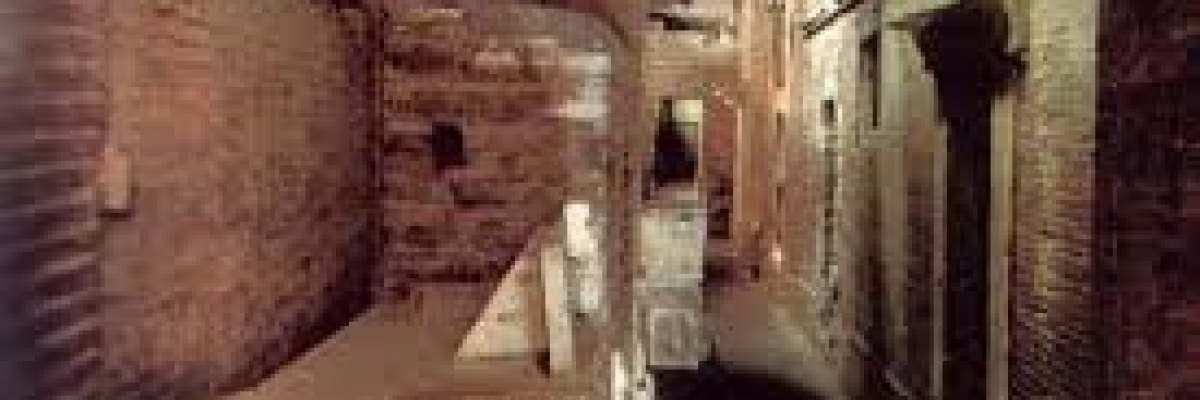
The ancient Liber Pontificalis (Book of Pontiffs) gives brief lives of the first 108 holders of the see of Rome. Only recently has this important work been translated into English, allowing those of us whose Latin is less than fluent to browse at will.
The fourth pope listed is Clement, known to history as Clement of Rome and the author of an epistle, addressed to the Corinthians, that is used by Catholic apologists to show the early exercise of papal authority. It seems that the Corinthians had called on Clement to settle a dispute. (The poor Corinthians were still troubled, long decades after Paul had tried to straighten them out—apparently with insufficient success.) The last surviving apostle, John, lived much closer to them and would have been the logical adjudicator, but they didn’t write to him. They wrote to the successor of the chief apostle, and Pope Clement replied in tones of authority.
The Liber Pontificalis gives only twenty lines about Clement, including the curious note that “on St. Peter’s instruction he undertook the pontificate for governing the Church, as the cathedra had been handed down and entrusted to him by Jesus Christ. . . . Hence Linus and Cletus are recorded before him because they were ordained bishops to provide the sacerdotal ministry by the prince of apostles himself.”
For clarification of this peculiar passage, I flipped back a page to the life of Peter. “He ordained two bishops, Linus and Cletus, to be present in Rome to provide the entire sacerdotal ministry for the people and for visitors.” Today we would call Linus and Cletus auxiliary bishops. They seem to have been given most of the sacramental duties, while Peter oversaw the Church as a whole. “Peter himself was free to pray and preach, to teach the people” (suggesting perhaps that the sacramental duties of a bishop tended to limit his leisure for prayer and for homiletics?).
Then comes a curious point: in addition to praying, preaching, and teaching, Peter seems to have been noted for his public debates. “He held many debates with Simon Magus, both before the Emperor Nero and before the people, because Simon was using magical tricks and deceptions to scatter those whom Peter had gathered into Christ’s faith. When their disputes had lasted a long time, Simon was struck down by God’s will.”
Nero, later the first great persecutor of the Church, thus knew Simon Magus and Peter and amused himself by watching the magician joust with the fisherman from Galilee. But Nero’s champion “was struck down by God’s will.” Did this embitter Nero against the Christians? We aren’t told, but it is a fair surmise. Recall that Pharaoh’s opinion of the Israelites was not improved when he saw his priests bested by Moses.
The next sentence of the life of the first pope records that Peter “consecrated St. Clement as bishop and entrusted the cathedra and the whole management of the Church to him, saying: ‘As the power of government, that of binding and loosing, was handed to me by my Lord Jesus Christ, so I entrust it to you; ordain those who are to deal with various cases and execute the Church’s affairs; do not be caught up in the cares of the world but ensure you are completely free for prayer and preaching to the people.’ After making this arrangement he was crowned with martyrdom along with Paul in the thirty-eighth year after the Lord suffered.”
Do not misinterpret what is going on here. No pope can make another man his successor; the most he can do is make him a bishop, which is what Peter did to Linus, Cletus, and Clement. It is unclear what force should be given to the clause “after making this arrangement,” but I take it to mean that Clement was consecrated not long before Peter’s death.
He appears to have been Peter’s recommendation for pope, but that choice could not be made until the papal see fell vacant and thus would be made by the living, not by Peter. Since Linus and Cletus had been ordained some years earlier to assist Peter in the administration of the see of Rome, and since each had paid his dues, so to speak, it must have seemed proper to the clergy of Rome to allow each in turn to serve as chief bishop of the imperial capital.
Thus Linus became the second pope, holding the see for eleven years, and Cletus the third, holding it for twelve. Next came Peter’s personal favorite, Clement, who was pope for nine years. The Liber Pontificalis closes its lives of Linus and Cletus by noting that each was buried “close to St. Peter’s body on the Vatican [Hill].” Unexpectedly, Clement, Peter’s favorite, died in Rome but ended up being buried in Greece.
Peter was buried, as we all know, on Vatican Hill. At the time of his death, that hill—which is not counted among Rome’s seven distinguishing hills, which are all on the other side of the Tiber—was outside the city limits and consisted chiefly of a cemetery. It was a rural area of no consequence. Early on, after the legalization of Christianity, a church was erected over the place Peter was interred. That church gave way, over the centuries, to multiple enlargements, the present basilica being completed in the seventeenth century.
It was only a lifetime ago that scientific proof of Peter’s burial was obtained. In the 1940s Pope Pius XII authorized excavations beneath the high altar. The digging disclosed a necropolis (city of the dead). Today one can take a tour of the Scavi (Italian for excavations; see photo), provided one prudently makes a reservation months in advance.
The necropolis is like a tiny town, with narrow streets bordered by brick buildings, but the “buildings” are mausoleums. The archaeologists discovered, directly under the high altar, a small memorial to Peter. It must have been erected shortly after his death, while the memory of the burial spot was still fresh. Neighboring his memorial are burial niches, the facings of which are inscribed with graffiti that say things like “buried near Peter.”
When the memorial was opened, it was discovered to be—empty. Where were Peter’s bones? Had then fallen away into dust? It turns out they, or what little remained of them because they largely had disintegrated, were nearby, having apparently been removed (hidden away, actually) during an early persecution to forestall the authorities unearthing Peter’s bones and destroying them.
This story of the excavations underneath St. Peter’s Basilica are not part of the Liber Pontificalis, of course, but they are a fitting cap to the story told in that ancient book.



